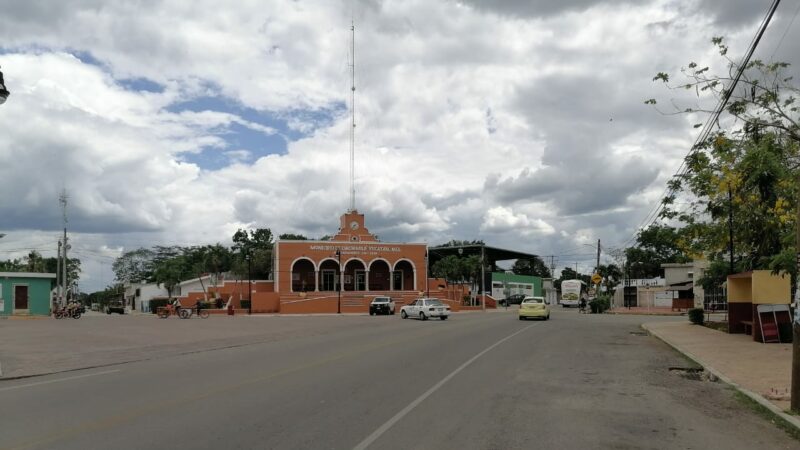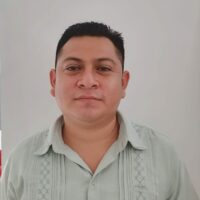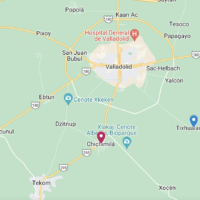
Chichimilá, Yucatán, where the digital activism project will be carried out. Photograph by José Alfredo Hau Caamal. Used with permission.
 Name: Jose Alfredo Hau Caamal
Name: Jose Alfredo Hau Caamal
Language: Maya
Location: Chichimila, Yucatan
 Project summary:
Project summary:
Creation of linguistic landscapes using ancient and contemporary Mayan writing through OpenStreetMap (OSM).
Bix a beele'ex, in k'aaba'e’ Alfredo Hau. Táan in jo'olintik u meyajil: U chíikulil boonil úuchben maayats'íib yéetel u t'aanil maaya kaaj tu péepet boonil openstreetmaps.
My name is José Alfredo Hau Caamal, I am 36 years old and I belong to the Mayan-speaking community X-Alau in the municipality of Chemax in Yucatán. I currently live in Chichimilá, Yucatán.
I teach the children of the community how to decipher hieroglyphs. I am also a freelance translator from Spanish into Mayan on various topics, and I create projects focused on language and culture.
My project
This digital activism project is based on the teaching of ancient Mayan writing known as úuchben ts'íib, epigraphy, hieroglyphic writing, Mayan glyphs or, as scholars say, the classic Mayan writing system. Being proud of our legacy as a point of reference for this project is fundamental so that the Mayan language can be used in spaces of interaction and that the community members can see it represented on signs, posters, inscriptions or on any physical surface.
My project includes creating linguistic landscapes using ancient and contemporary Mayan writing through OpenStreetMap, as well as creating locations, routes and itineraries using the linguistic landscape of the community to strengthen the language and revitalize the ancient Mayan writing. It also includes training children, youth, and adults in the use of the writing system to create posters, murals, signs, advertisements and signage for public spaces and uploading them to OpenStreetMap to highlight the spaces of common use, and historical places with names given by the community.
My motivation
Since 2003, I have been part of CONAFE (National Council for Education Development) as a community instructor. During this time, the work I have been doing in the Mayan communities became very important to me. Teaching made me change my career path from studying tourism to dedicating myself to the cultural activities of the community. I participated as a literacy teacher for INEA (The National Institute for Adult Education). I was part of the project in which teachers were evaluated in the Mayan language, I translated the Political Constitution of Mexico, the Political Constitution of Yucatan, the Yucatan Encyclopedia, and I have taught úuchben ts'íib and Mayan to different sectors of the population. This reminds me that the most difficult thing has been to find a way to demonstrate that the Mayan language is not useless as it has been presented, but that it has all the characteristics of any other language.
Realizing that my children are part of the generation that does not speak Mayan is one of the most important reasons for me to teach the language.
We can teach, strengthen and preserve the language by demonstrating that the Mayan language can be transmitted to our children without the need to be in a school, but by using it in what we already have available: hieroglyphs, texts, phrases, Mayan words in public spaces, shops, houses, and all spaces in which one can write and walk, observing and reading maayat'aan like a child who is just learning to read.




